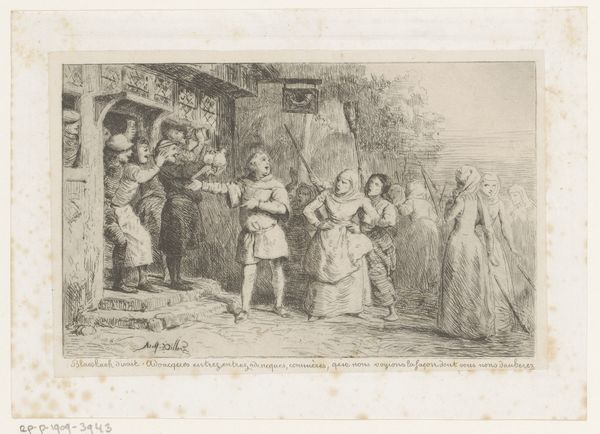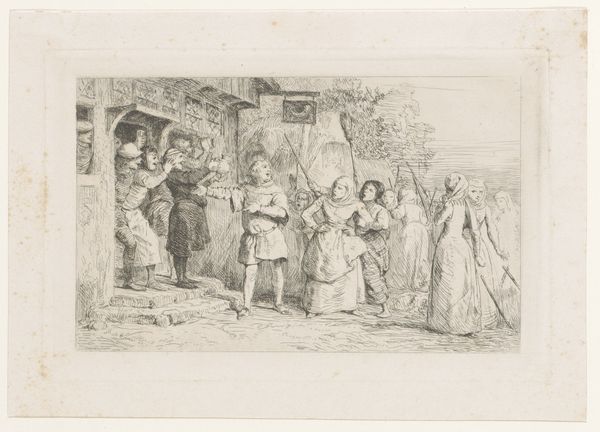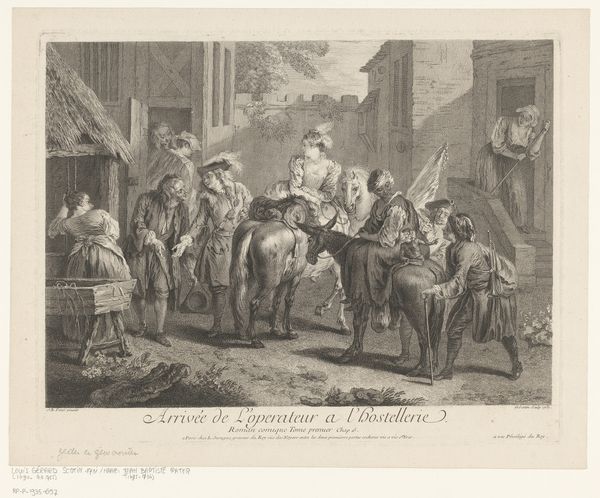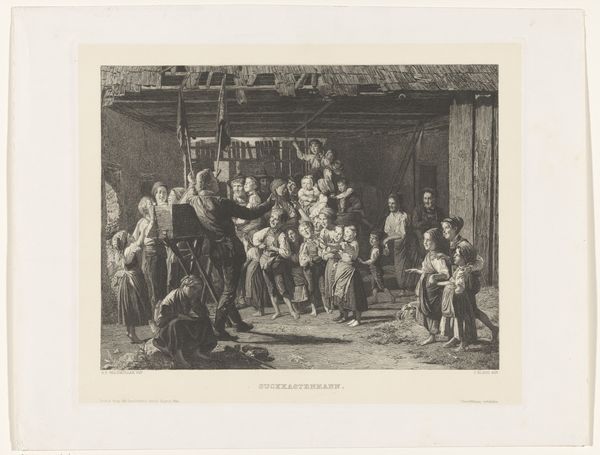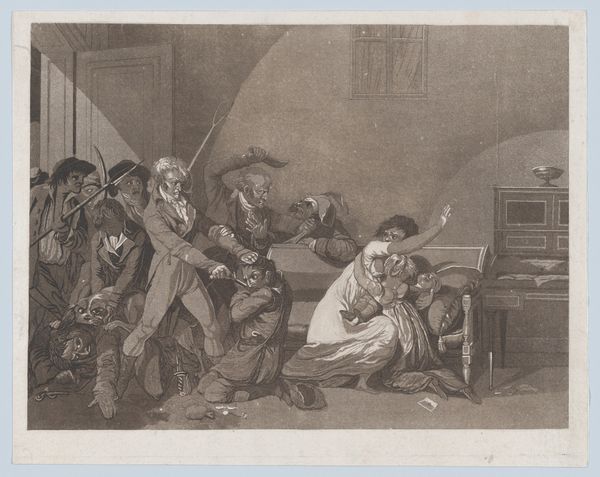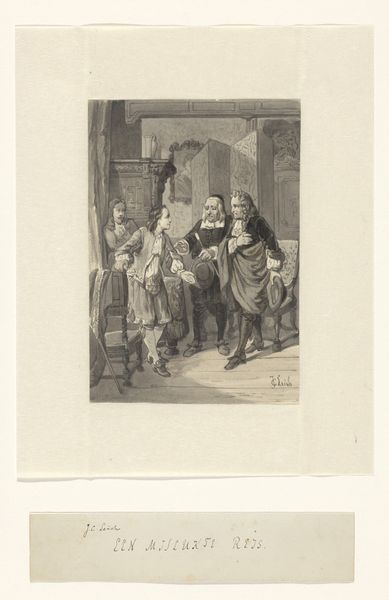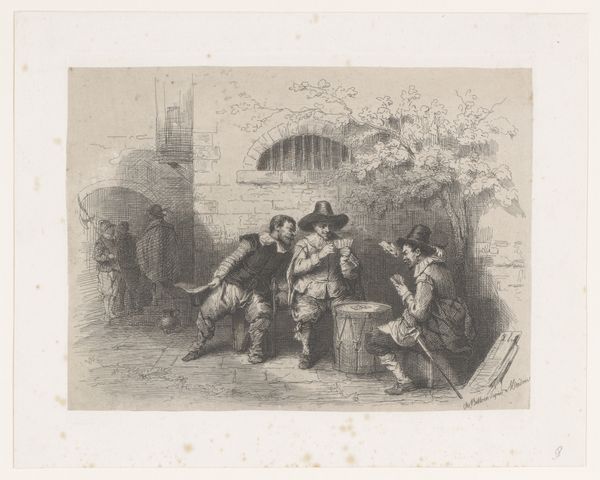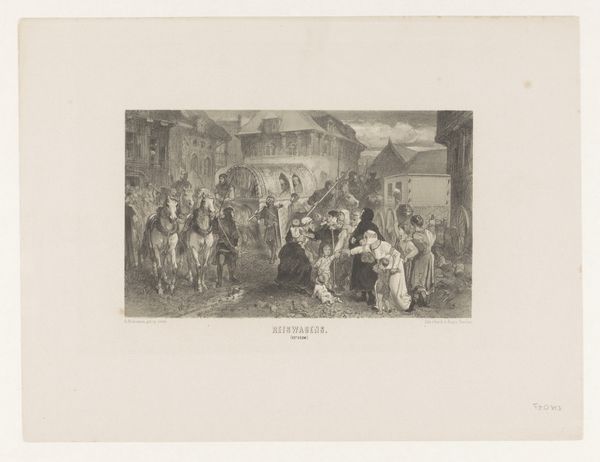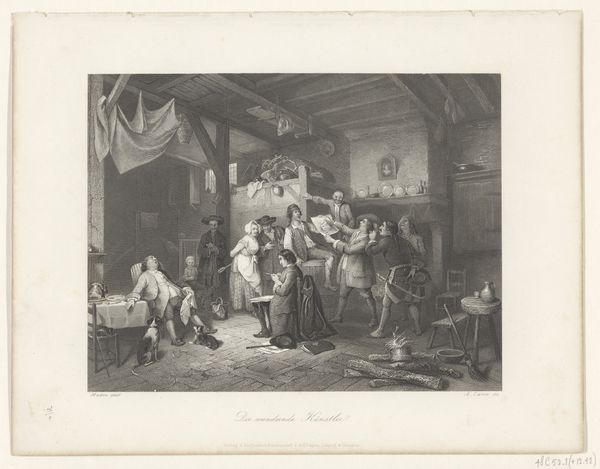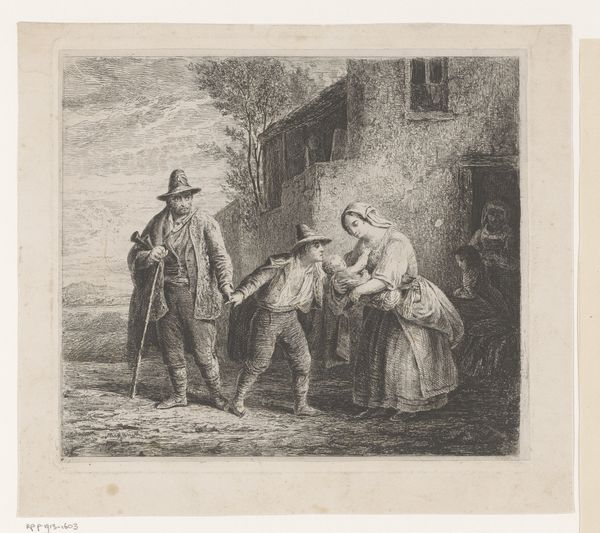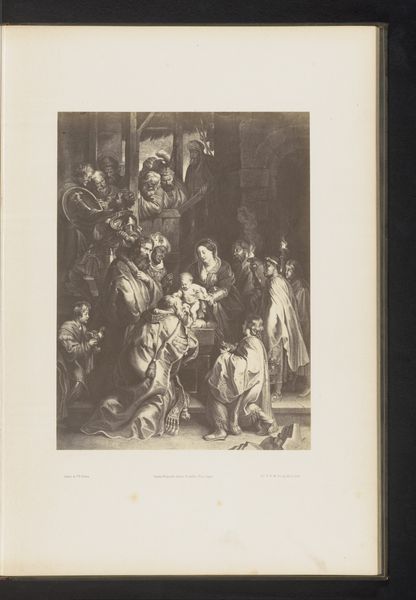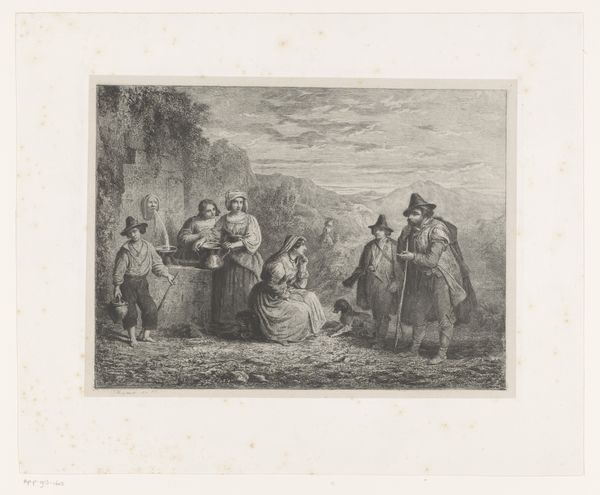
drawing, print, etching, paper, ink
#
drawing
#
narrative-art
# print
#
etching
#
paper
#
ink
#
genre-painting
Dimensions: height 119 mm, width 182 mm
Copyright: Rijks Museum: Open Domain
Curator: This intriguing etching and print, rendered in ink on paper, is entitled "Menigte vrouwen voor een herberg met drinkers" - translated, that's "Crowd of Women Before an Inn with Drinkers". It’s by Adolphe Alexandre Dillens, dating back to 1861. Editor: There’s such a tense atmosphere conveyed with just lines and hatching! The contrast between the rowdy men inside and the women gathered outside feels incredibly charged. Curator: It's definitely a loaded image, hinting at broader societal tensions of the time. The context is everything here. Think about the role of women in the mid-19th century, the rigid social structures, and the spaces they were, or were not, permitted to occupy. Editor: Visually, the composition draws you in. The artist uses this rather aggressive diagonal line leading your eye from the inn entrance to the gathered women, creating a clear divide. It seems almost confrontational. Curator: Indeed, that visual division underscores the social divide. Genre paintings like these often served as commentaries on morality and class, and the accessibility of printed works meant Dillens’ commentary could reach a wider audience. One has to consider what narratives were being reinforced. Editor: You can see how the detail of the figures really does a lot to show off how intent and perhaps even distressed they are. Especially for such an unassuming print. Even the textures created with such delicate crosshatching feel vital and alive. It shows you that something, or something bad, is certainly brewing, beyond simply being a "genre-painting." Curator: Precisely, what appear to be simple scenes from daily life are actually imbued with social commentary, particularly concerning gender roles and the spaces allocated to different social groups. Editor: It definitely prompts reflection on societal roles and expectations, even today. It also encourages you to stop and look more carefully at how an artist, even in times long past, communicates. Curator: Absolutely. This seemingly straightforward etching acts as a window onto complex societal dynamics. Editor: Agreed. A potent reminder that art doesn't exist in a vacuum; it's a reflection, a critique, and sometimes a catalyst for change.
Comments
No comments
Be the first to comment and join the conversation on the ultimate creative platform.
